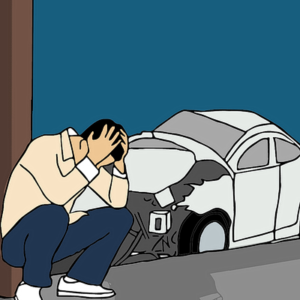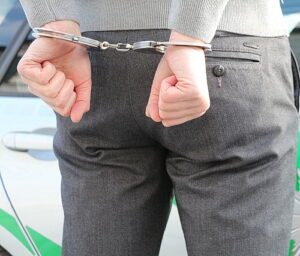Please note: Attorney Patricia Scanlon does not manage DWI (DUI) cases. This article is for informational purposes only. Please refer to the home page if you need help with moving violations!
DWI Statistics

According to the New York State Division of Criminal Justice Services, there were an average of 30,000 adult DWI arrests (coined DUI in other states) in New York State each year from 2015 to 2019. This number has been steadily decreasing over the past few years, but it is still a significant number that should not be taken lightly.
This number can vary depending on a variety of factors, including the time of year, the location, and the general efforts of law enforcement. For example, there are typically more arrests while driving under the influence during the holidays and on weekends. Additionally, it should be noted that there is a great variance associated with the location of the arrests; such as, the number of cases in New York City is typically higher than the number of DWI cases in other parts of the state.
If you are arrested for DWI in New York, you will likely face a number of penalties, including fines, surcharges, jail time, and the loss of your driver’s license. The specific penalties that you will face will depend on the circumstances of your arrest, including your blood alcohol content (BAC) and whether you have any prior DWI convictions.
Long Island DWI Cases

According to the Long Island DWI Task Force, there were an estimated 15,000 DWI arrests on Long Island in 2021. There are a number of factors that contribute to the high number of DWI cases on Long Island. One factor is the high population density of the island. Long Island is home to over eight million people, which means that there are more potential drivers on the road. Additionally, it is a popular tourist destination, which means that there are more people drinking and driving on the island.
Another factor is the lack of public transportation. Many people on Long Island rely on their cars to get around, which means that they are more prone to drive after drinking. Additionally, the Long Island Expressway (LIE) is a major transportation artery that runs through the island, and it is a common spot for DWI arrests.
The high number of cases has a significant impact on the community. DWI accidents can cause serious injuries and death, and they can also have a negative impact on the economy. The Long Island DWI Task Force is working to reduce the number of drunk driving cases on by increasing enforcement and public education efforts.
What are Felonies?

Before we explain what penalties you could be subjected to if you are caught driving while intoxicated, you should know the meaning of felonies in NYS and how you could be charged with this penalty.
New York classifies felonies into five degrees, with Class A being the most serious and Class E being the least serious. The degree of a felony is determined by the severity of the crime, the potential harm to society, and the defendant’s criminal history.
Here is a Breakdown of the Degree of DWI Felonies in New York:
- Class A: The most serious felonies, punishable by life in prison. Examples of Class A felonies include murder, kidnapping, and arson.
- Class A-I: Felonies that are slightly less serious than Class A felonies, punishable by up to 25 years in prison. Examples of Class A-I felonies include criminal sale of a controlled substance in the first degree and rape in the first degree.
- Class B: Felonies that are punishable by up to 25 years in prison. Examples of Class B felonies include robbery in the first degree and assault in the first degree.
- Class C: Felonies that are punishable by up to 15 years in prison. Examples of Class C felonies include burglary in the first degree and criminal possession of a controlled substance in the second degree.
- Class D: Felonies that are punishable by up to 7 years in prison. Examples of Class D felonies include grand larceny in the third degree and assault in the second degree.
- Class E: The least serious felonies, punishable by up to 4 years in prison. Examples of Class E felonies include petit larceny and criminal mischief in the second degree.
Class E Felony DWI
A Class E felony DWI is charged if you are convicted of a second DWI within 10 years of a previous DWI conviction. This is the most common type of DWI felony in New York. The penalties for a Class E felony DWI include:
- Up to 4 years in prison
- Fine of up to $5,000
- 5 years of probation
- Revocation of your driver’s license for at least 1 year
In addition to these penalties, you may also be required to install an ignition interlock device (IID) in your car for up to 10 years. An IID is a device that prevents your car from starting if you have been drinking alcohol.
Class D Felony DWI
A Class D felony DWI is charged if you are convicted of a third DWI within 10 years of two previous DWI convictions. This is a more serious type of DWI felony than a Class E felony DWI. The penalties for a Class D felony DWI include:
- Up to 7 years in prison
- Fine of up to $10,000
- 5 years of probation
- Revocation of your driver’s license for at least 18 months
Injuries
If you injure someone and you are intoxicated, you could be charged with one of the following:
- Vehicular Assault in the First Degree: This is the most serious type of DWI felony involving injury. The penalties for Vehicular Assault in the First Degree include:
- Up to 25 years in prison
- Fine of up to $50,000
- 5 years of probation
- Revocation of your driver’s license for at least 10 years
- Vehicular Assault in the Second Degree: This is a less serious type of DWI felony involving injury. It is charged if you cause physical injury to another person while driving under the influence of alcohol or drugs. The penalties for Vehicular Assault in the Second Degree include:
- Up to 15 years in prison
- Fine of up to $25,000
- 5 years of probation
- Revocation of your driver’s license for at least 5 years
- Aggravated Vehicular Assault: This is a type of DWI felony involving injury that is specifically charged if you cause physical injury to another person while driving under the influence of alcohol or drugs and you have a prior DWI conviction. The penalties for Aggravated Vehicular Assault include:
- Up to 25 years in prison
- Fine of up to $50,000
- 5 years of probation
- Revocation of your driver’s license for at least 10 years
Other Factors That Can Affect the Penalties for a DWI Felony
- Your blood alcohol concentration (BAC) at the time of the offense
- Whether you caused an accident
- Whether you injured or killed someone in the accident
- Whether you have any prior criminal convictions
Here are some additional things to keep in mind if you are facing a DWI felony charge in New York:
- You have the right to remain silent and to have an attorney present during questioning.
- You have the right to a speedy trial.
- You have the right to confront the witnesses against you.
- You have the right to a jury trial.
In addition to these penalties, you may also be required to install an ignition interlock device (IID) in your car for up to 10 years. An IID is a device that prevents your car from starting if you have been drinking alcohol.
Summary
The specific type of DWI felony that you are charged with will depend on the severity of the injuries that you caused to the other person. If you are convicted of a DWI felony, you will have a criminal record. This can have a significant impact on your life, including your ability to get a job, rent an apartment, or obtain a loan.
Bottom line: Be smart, not intoxicated!